Technically of course the Knights Armament Company RIS is the OG ‘rail’ and the RAS is the closely-following twin brother of the RIS, but ‘2nd most OG’ wasn’t as nearly as punchy of a title for this post. I would like to cover some basics of the construction and function of the Rail Adapter System here using my own example for imagery, because I believe the original Knights Armament Company handguards for M4s represent a large and significant portion of the most iconic firearm silhouette that exists in the western world; I’ll also mention just a tiny bit of history though I am no expert researcher so I won’t attempt to go in to a ton of detail in that regard.
The super down and dirty basics here are that his handguard was designed by KAC as a drop-in replacement for the 2-part plastic M4 handguards in order to allow more secure and repeatable mounting of accessories to the forend of AR pattern carbines. It is not freefloated like most popular modern handguard options for ARs because the front of the RIS/RAS are in contact with the barrel of the weapon near the front sight, meaning if you apply enough pressure to the handguard in any given direction you can potentially cause accuracy issues and move the fall of shot temporarily.
Knight’s Armament Company was founded in 1982 and I don’t personally know anything much about what they did before the invention of the 1913 rail standard, but this is one of the blurbs on the current KAC site pertaining to the RAS:
“As owner of Knights Armament Co, C Reed Knight Jr watched the news when American troops deployed into Panama. Reed saw the troops with flashlights duct-taped to their M16 hand guards. He immediately thought to himself, “there must be a better way to do that”. This observation and desire led to a new chapter in contemporary weaponry development, a modular rail system. Thus the RIS (Rail Interface System) was conceived. This led to the USSOCOM SOPMOD kits adopting the KAC brand for mounting accessories to their weapon which added twenty years or more to the life of the M16.
Through evolution the RAS (Rail Adaptor System) was produced and the first sale of the RAS system was in 1997 with signed contract # DAAE20-97-D-0020 on August 9 1997, KAC shipped its 1,000,000th rail forend to the US Army on July 22 1999.”
Below is a picture posted on Soldier Systems of a reproduction rifle put together by Larry Vickers based on the weapon he used during the aforementioned invasion of Panama in December 1989 and then during the invasion of Iraq in January 1991.
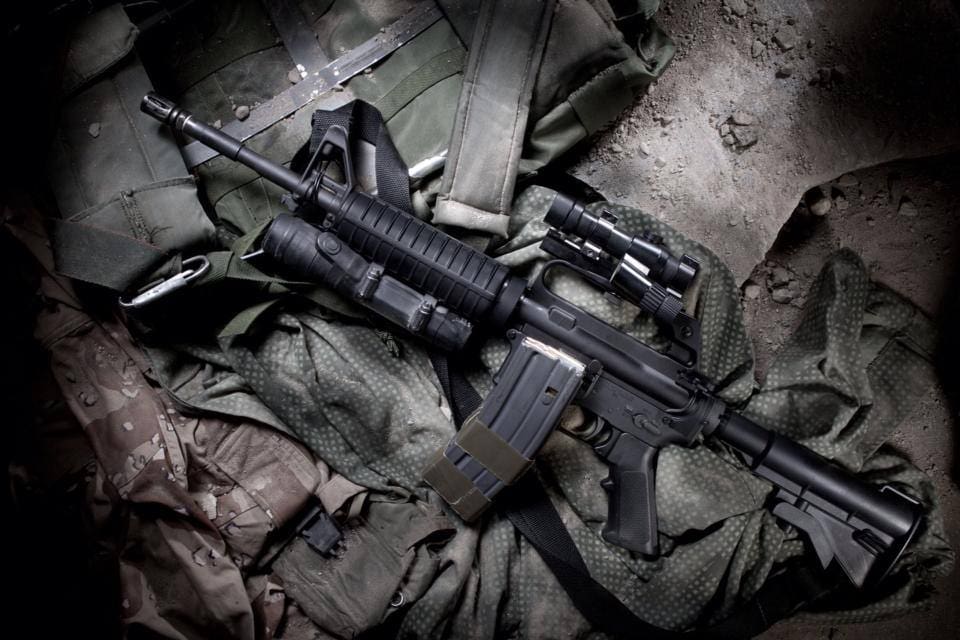
As you can see, the light is held on by worm-drive hose clamps which are in turn attached to the lower plastic handguard with nuts and bolts. There’s a lot of heat shrink used and the switch for the light is amalgamated in to the whole DIY-style assembly.
https://looserounds.com/2013/10/16/kac-ris-and-ras/
This post is about the RAS rather than RIS since that is what I own, which is the latter model and not as rare or collectible by a long shot, but it is more practical and I don’t have to have much in the way of concerns about using and potentially damaging it. If you wish to know the differences between the RIS and RAS (primarily the clamping mechanism), there unfortunately isn’t any solid writing online as far as I can find. I’m leaving the dead link above up in hopes the owner eventually updates his site in future. The AR15.com thread below mentions some basics:
https://www.ar15.com/forums/ar-15/KAC_RAS_VS_RIS/12-334993/
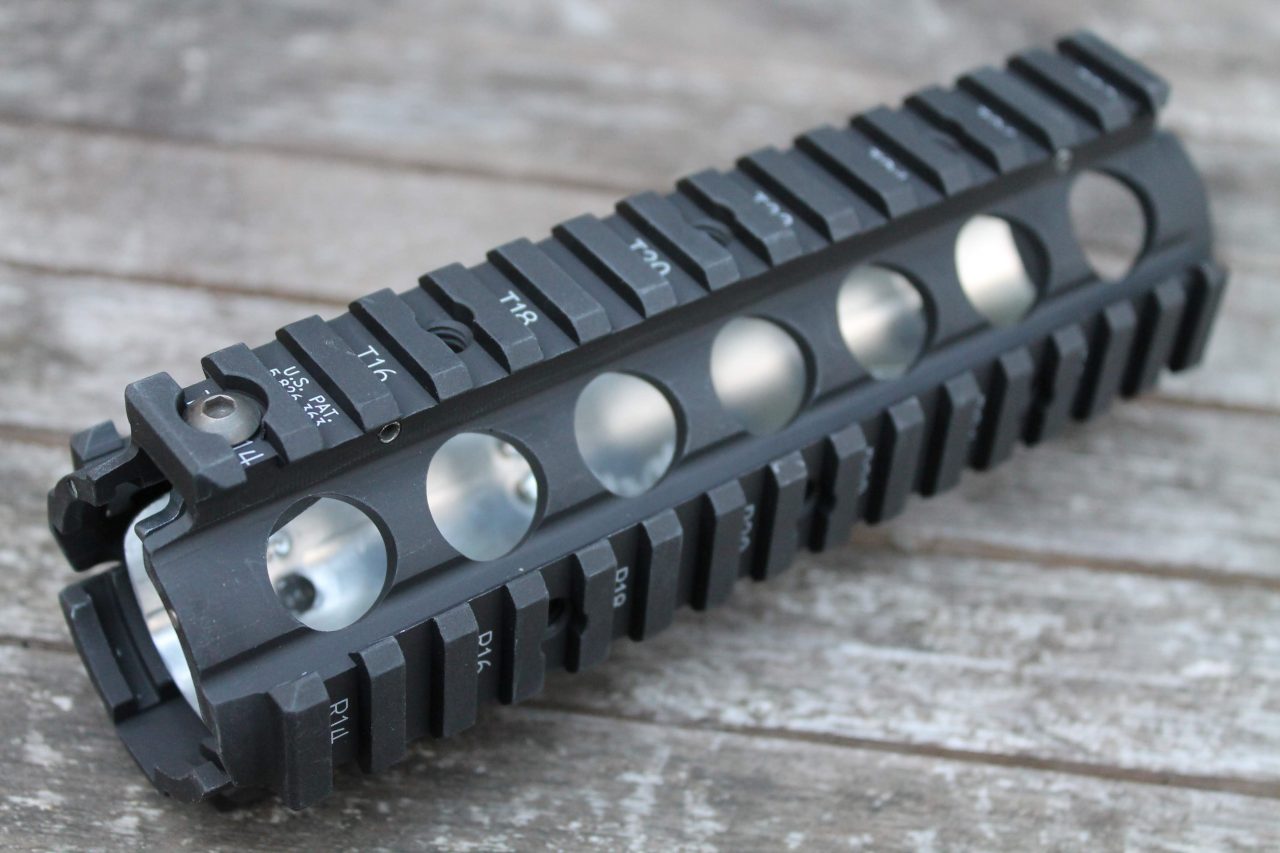
Above is the view of the upper, 12 o/clock rail track on the KAC RAS looking from the rear of the rail towards the muzzle end. The white laser etched slot markings are intended to be noted down when attaching and removing accessories, particularly in terms of fitting lasers to the handguard in order to achieve the best possible chance of returning to zero.
The RAS is 6.25″ long so even with a 10.5″ barrel and carbine length gas system with traditional M4 gas block/front sight and delta ring, you lose out on around 2.5″ of potential handguard real estate at the very front when compared to a modern low profile gas block and freefloat handguard setup with the same barrel length. Although configuring a light, laser, foregrip and relevant switches is certainly possible on the RAS it’s just more cramped and the resulting grip on the weapon is not quite optimal for common modern close quarters shooting techniques. Although using the broomhandle VFG of the era would actually negate that to a large extent given the relocation of the reaction-side hand.

Next, a similar view but from the front/muzzle end of the handguard looking down towards the rear end that is retained by the delta ring, again the 12 o/clock rail is uppermost as the handguard would sit when fitted to a properly oriented rifle.
Each RAS is machined from aluminium (presumably 6061) and the weight of the handguard alone is only 8.9oz, which on the one hand does not take into account the weight of handguard cap, delta ring, delta ring spring and barrel nut but equally is really not all that bad, especially when many 8-9″ modern, freefloat, quad 1913 handguards weigh 12 ounces or more excluding their barrel nut and mounting screws. Even some of the cheaper KeyMod and M-LOK options around the same length can weigh as much if not more and I have never seen one with a built in heat shield. A lot of machine times goes in to each RAS to cut that weight down and all the edges are de-horned nicely.

A thin piece of curved aluminium is riveted into the detachable 6 o’clock rail to function as that aforementioned heat shield. This is an important part of the design given that the user is expected to be using either the included vertical foregrip or a traditional hold with the support hand underneath the handguard rather than the modern thumb-over-bore technique. The reaction hand will also be a lot closer to the chamber end of the barrel where the most heat is radiated.
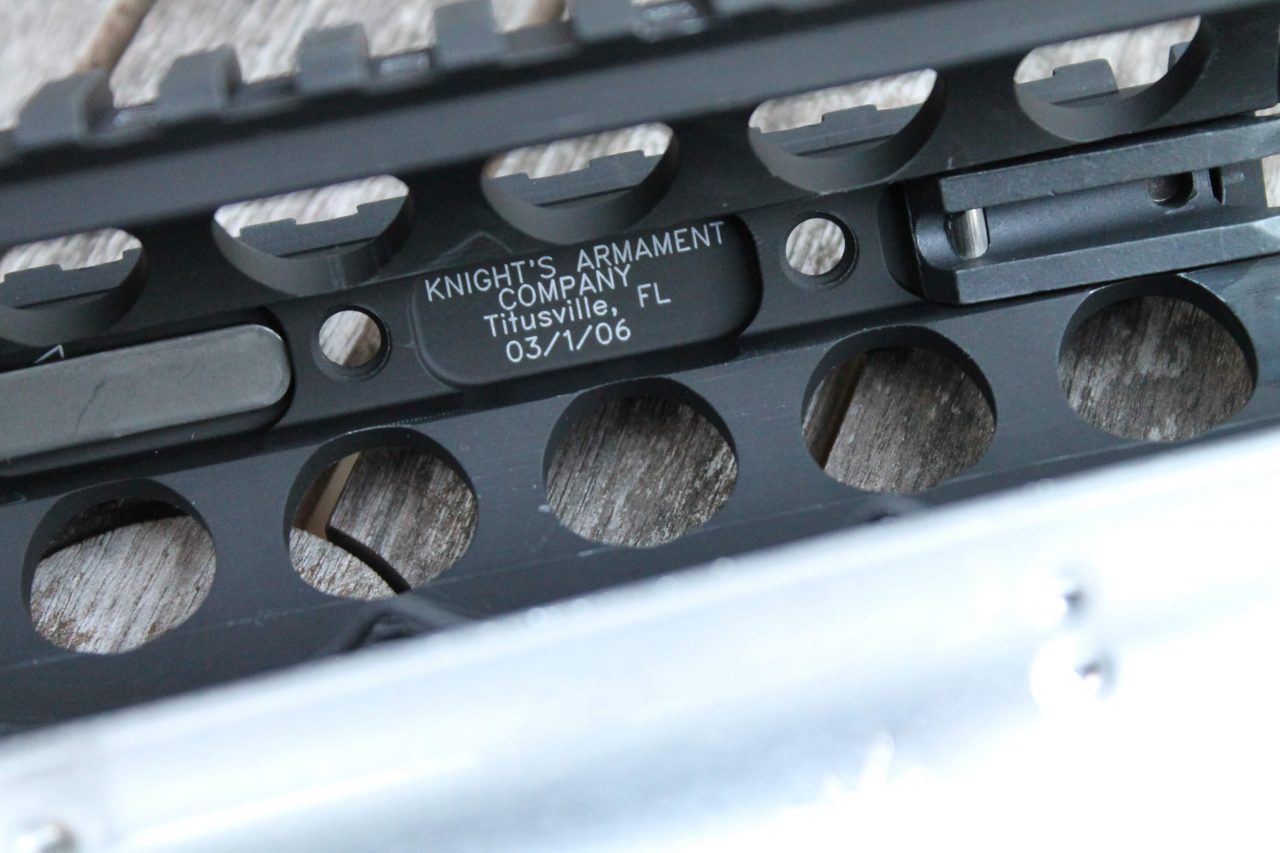
Markings inside the centre top of the main or upper handguard are shown above. My particular example was manufactured in Florida and I would assume, based on standard US date writing conventions, it rolled off the assembly line on the 1st of March 2006.
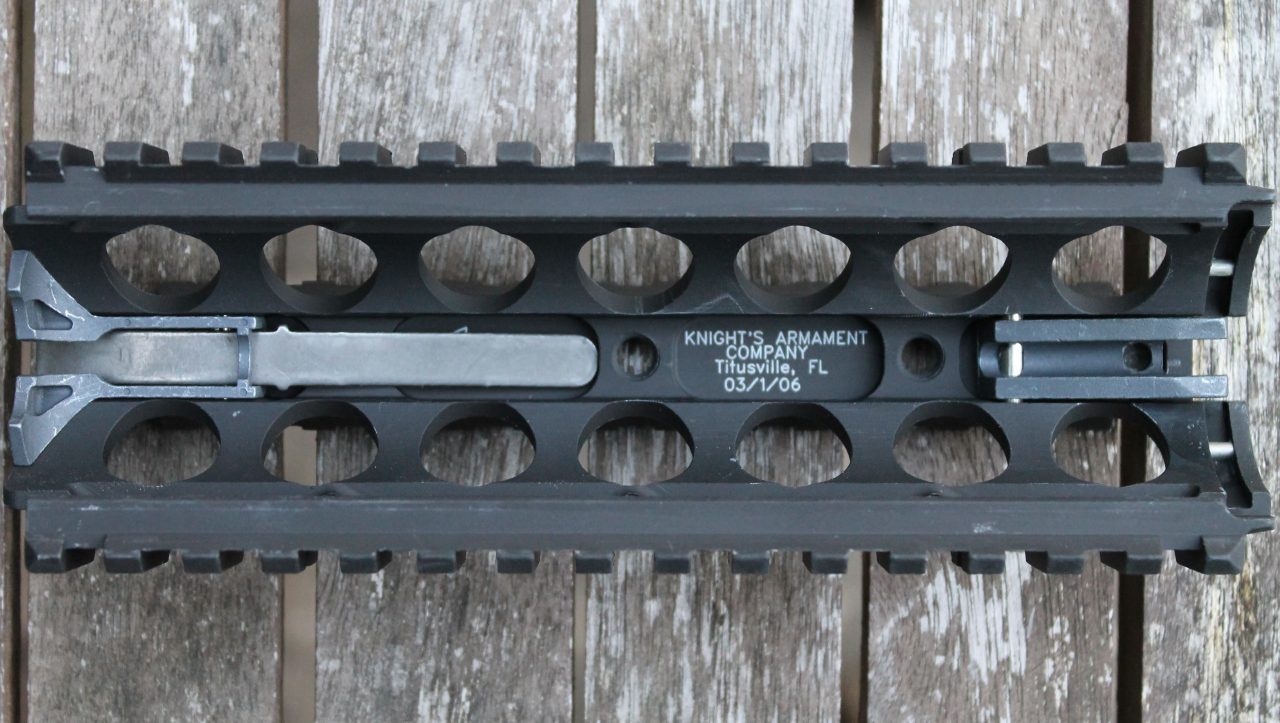
Another view of the entirety of the inside of the main/upper segment of the handguard.

http://quarterbore.com/library/pdf_files/kac_ras_inst.pdf
http://www.quarterbore.com/kac/kacrisras.html
The above diagram contains the official installation instructions and diagram from KAC. You can download them for yourself via the PDF link.
It can be tricky to wrap your head around the exact procedure for installing the RIS or RAS, and which parts are doing what, from descriptions and diagrams alone. The above video is the best visual representation I could find online which shows the process fairly clearly. If you don’t know your barrel nut from your handguard retainer cap or what a delta ring is then this may be of assistance.

Arguably the largest and most important element of the iconic aesthetic of the KAC RAS is not the handguard itself, but the rail covers that shipped with it. They come in various lengths but compared to modern cover options for 1913 and M-LOK they are thick, can be somewhat tricky to install sometimes and are not at all modular.

On the left in the image here we can see the extra cuts made in to slot 28 (compared to the unmarked slot to its’ right) which allow secure locking of the original KAC ribbed rail covers via the piece of spring steel that is an integral part of said cover. In properly dimensioned picatinny 20mm rail these cuts are put in to the first and last slot along each side of the handguard, even to this day, at least as far as quality manufacturers are usually concerned.
This is quite redundant really as these original KAC covers are not in common use anymore on any handguard other than issued US RASs and you won’t find these covers for sale in many places at the time of writing, though there are still many floating around due to the quantities initially produced. As far as I can tell from examining a lot of different quad rails over the years, this cut seems to be part of the manufacturing spec for all 1913 rail, since even the Daniel Defense handguards for the L85A2 include the ability to attach original KAC cover panels despite the panels not being standard issue for the MoD.

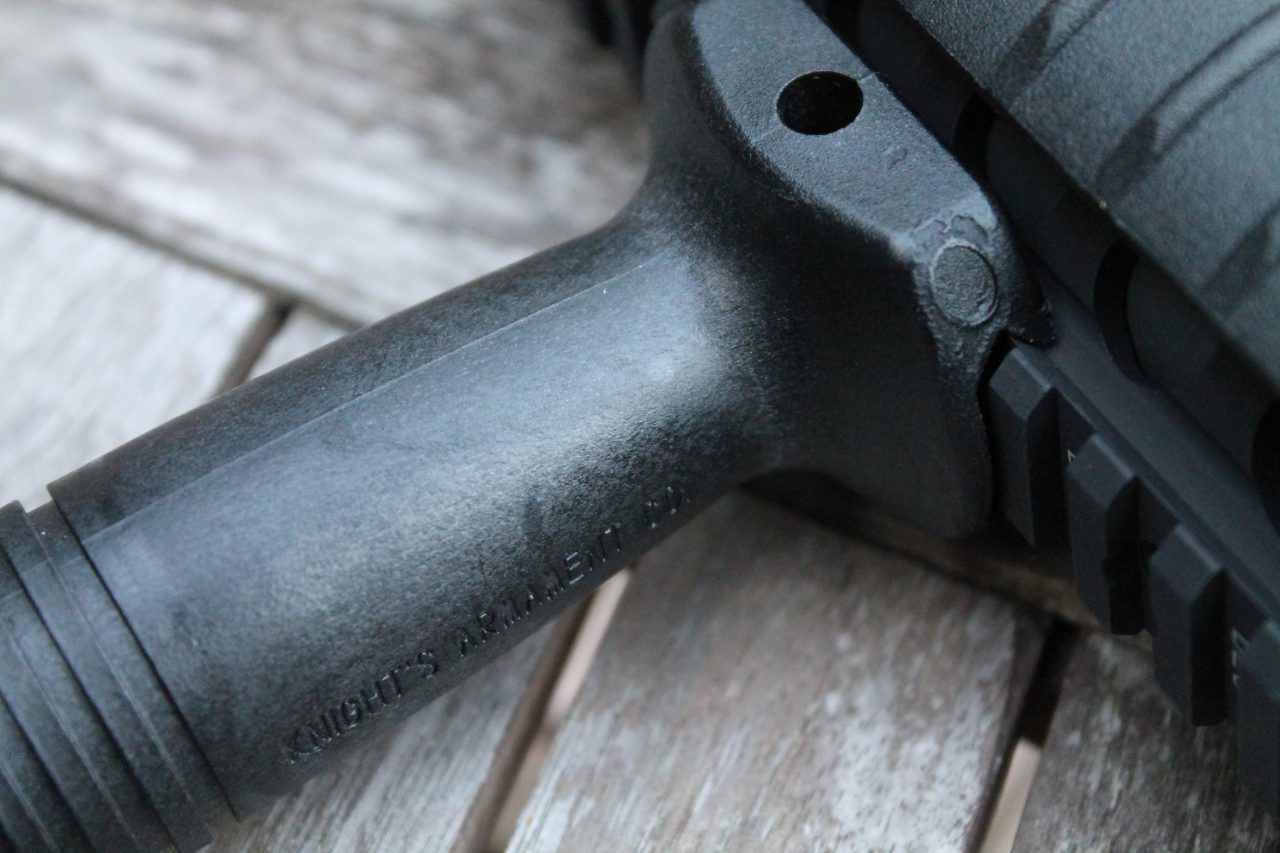
Last but not least, one of the most recognisable components of the entire 90s KAC 1913 rail product suite, their vertical foregrip often referred to as the broomhandle grip. Vertical forward grips have been a thing since long before the invention of 1913 rails, but this grip was the first modular one for pic rail that can quickly and easily be mounted to, and removed from, a handguard.

Unfortunately while writing this post I was unable to find any official information on the actual development of the 1913 handguards by KAC and pin down a date on when the RIS was first produced or when exactly the RAS followed it. As far as large scale issue of such a rail goes, this image showing American military personnel (most likely Army) in Kosovo, January 2000 is the earliest one I have found of the KAC handguard in use. Note the individual has a 1913 railed forend and ‘flat top’ upper receiver but appears not to have been issued any accessories other than rail covers and a standard rear iron sight/carry handle for his M4.

This photo featuring Pat McNamara during his time in Delta in 1997 features a KAC M4 handguard here on the left, which could be either the earlier RIS, or a RAS that was perhaps being trialed by US SOF. This is the earliest picture of one of these handguards I have personally been able to find, though I would expect some of the hardcore archivists and historical researchers out there may have some other images that may go back a little earlier.

An interesting side note is that the threaded holes for camera/video accessories are spaced just the right distance apart for certain accessories designed for M-LOK, specifically this Magpul mount fort SureFire remote pressure switches as shown in this image that I stumbled upon over on the AR15.com forums. Now, you can’t just take the T-nuts off of the M-LOK screws and attach M-LOK accessories straight to a RAS, you do have to buy the right thread spec screws and make some other minor alterations, but the centres of the holes are the right distance apart nonetheless. Whether this is pure coincidence or the RAS was used as some form of reference when the M-LOK spec was decided, I do not know.
While KAC do advertise the RAS for sale on their web store I have checked quite a few times for stock at intervals a few months apart and have only ever seen them listed as out of stock thus far. Whether this is due to very high demand or the fact they simply might not be manufacturing these handguards much anymore for the commercial market (if at all) I do not know, I suspect it may be the latter though.
The issue with this product now is that it costs around $250 for a quad rail that doesn’t necessarily lock in with 100% stability and, as an example, Midwest Industries has for many years now offered a 2 part drop-in handguard with M-LOK at 3, 6 and 9 that costs about half as much, weighs around 4 ounces less, mounts more securely and is made from the same materials (at an educated guess) with the same surface finish. All of which adds up to mean the RAS is pretty much relegated to a cloner/collector item at this point in terms of new purchases, but it did take a decade or more for that to happen and there are millions of these handguards out there in US military alone service that continue to do good service.
While they very much falls in to the category of obsolescence now, the RIS and RAS are the handguards that began the continuous evolution that has created the AR-15 forends we have available today, which themselves are arguably the most vital components in ergonomic usage of IR lasers and in cementing the AR rifle firmly in its’ current position of most popular weapon with the best Special Forces units all around the world.

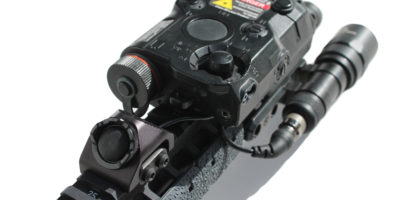
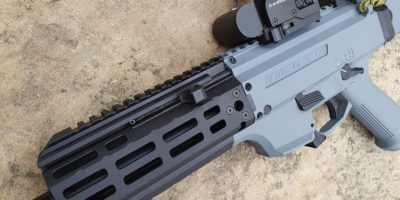
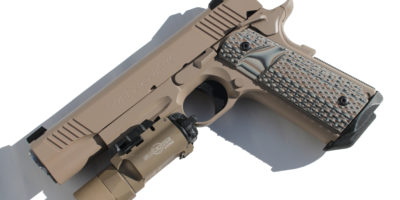
Chris M.
Great write up on the KAC RAS. I’ve been looking for one for my military issue M4 clone I’m building and was surprised at 1) the cost of them, and 2) the rarity of them. Looks like I’ll have to settle on the MI drop in hand guard.
TheFull9
Yeah I’m not sure many are getting made anymore. They’re around but will be $300+.
Joseph Bentley
I have 11 RAS full length bottom hand guards. If yo find any top hand guards we could make a trade.
Stevo
I am familiar with Knight’s Armament during the 1995-1996 era when still located in Vero Beach. The Knight’s Company and the Knight’s Armament RIS reportedly received their first contract for $8 million about the end of 1995. I do not know when they transitioned into the RAS, but it doesn’t seem like it wasn’t very long after the RIS was out, so there must have been some reported deficiencies in the original RIS? I was no longer there as of the end of 1996. The Knight’s Armament Company was already well established for creating materials for Special Forces requirements and the SR-25 which was designed in conjunction with Mr. Eugene Stoner.
The RIS base castings would be delivered and then all that was left to do was to machine in the rails and a few other spots for the attachment hardware. Early Model Shop versions were milled from blocks of aluminum. Production models were cast.
TheFull9
The info is much appreciated mate, always good to have. Did you work there?